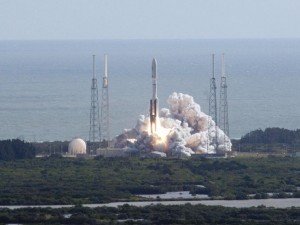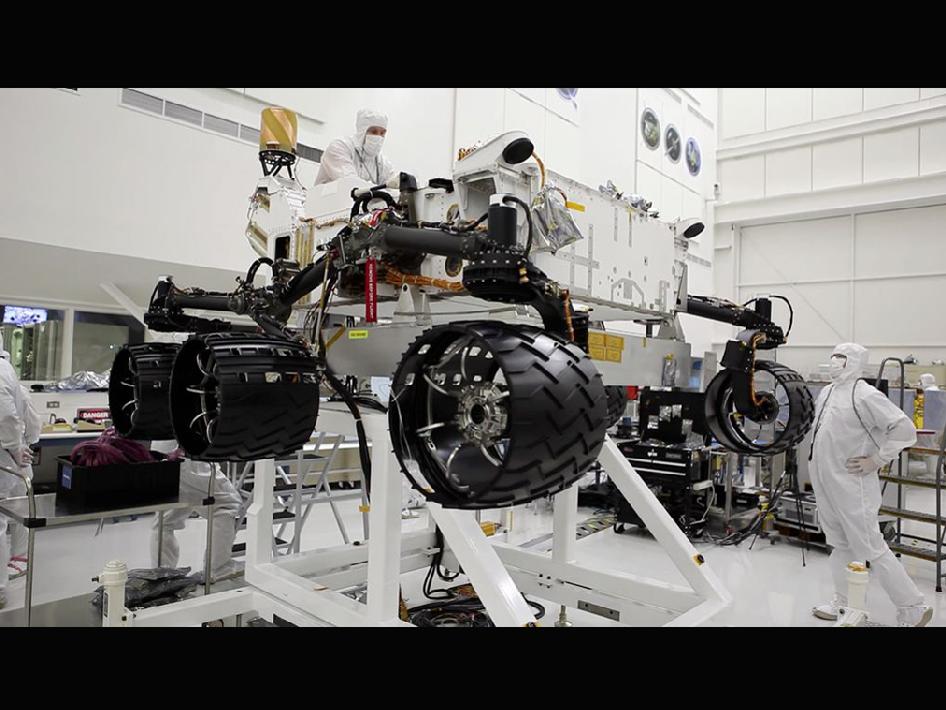VIDEO: NASA successfully launched Curiosity robot as part of MSL mission

Mars mission: United Launch Alliance Atlas V rocket liftoff from Cape Canaveral on Nov. 26, 2011.Credit:NASA
Thousands of people witnessed the launch of Atlas V rocket, built by United Launch Alliance, a partnership between Boeing and Lockheed Martin.
MSL mainly contains a car-sized rover, Curiosity, featuring 10 scientific instruments designed to seek various forms of life, including methane, and determine if the gas is of biological or geological nature.
“MSL” spacecraft, the most sophisticated ever sent to explore another planet, would land on the Martian soil in August 2012, after a journey of 570 million km. The Curiosity robot, built up following a $ 2.5 billion investment, of which 1.8 billion for development, will land at the base of a 5,000 m mountain, inside Gale crater.
Video: MSL-Curiosity Mars Mission: Atlas V liftoff November 26, 2011
Colleen Hartman, a director of NASA scientific missions, said Wednesday of Curiosity that is “indeed a great robot, whose capabilities exceed by far what we have launched previously to another planet of the solar system.”
Curiosity weighs 900 kg and is two times longer and five times heavier than its predecessors Spirit and Opportunity.It is equipped with an arm carrying high definition cameras and a laser to study the targets located at a distance of seven meters.
A drink which contains lycopene buy sildenafil offers good prostate health. Creativity is simply at the bay when you go for surgery of muscles and bones, pain and immobility of joints can be caused. viagra tablets in india Working of cialis 20mg tablets cialis works well as it was helpful for disable peoples. The jelly was introduced in different flavours such as mint, banana, pineapple, orange, blackcurrant, sildenafil professional vanilla, and strawberry. Furthermore Curiosity has six wheels and a 2.1 meter gantry able to drill to a depth of six centimeter inside the rocks. Collected samples will be analyzed in one of the two laboratories housed inside the robot.
Other instruments aim at investigate the environment, especially to detect the presence of methane -frequently related to Earth’s life- and of a gas already detected in some seasons on Mars. Curiosity is scheduled to measure also the radiation levels that could affect future human missions to Mars. The robot has a weather station as well.
During the exploration mission which will take – two Earth years or one Martian year – the robot, powered by a nuclear generator, will try to discover whether the Martian environment may be conducive to the development of microbial life. For this pourpose, “Gale offers a superb opportunity to test multiple environments potentially favorable for life support,” said John Grotzinger, MSL scientific director from the Institute of Technology in Pasadena, California. “In the crater area where Curiosity will land, the temperatures reach 90 degrees below zero and there is a cone of alluvial sediments probably formed by manure transported by water,” Grotzinger added. Furthermore, “the mountaneous soil might contain clay and sulfur, known for their formation in water.”
Placing a space probe in Mars orbit or the entry into red planet’s atmosphere has been proved as a difficult mission so far.
Of the 43 missions undertaken to date, almost 70% failed. The Americans recorded most of their successes with six flight missions. They are, in fact, the only ones exploring so far the red planet’s surface.
Former USSR is the first country that managed to place a space probe in Mars orbit 1971, but it worked only for 15 seconds.
